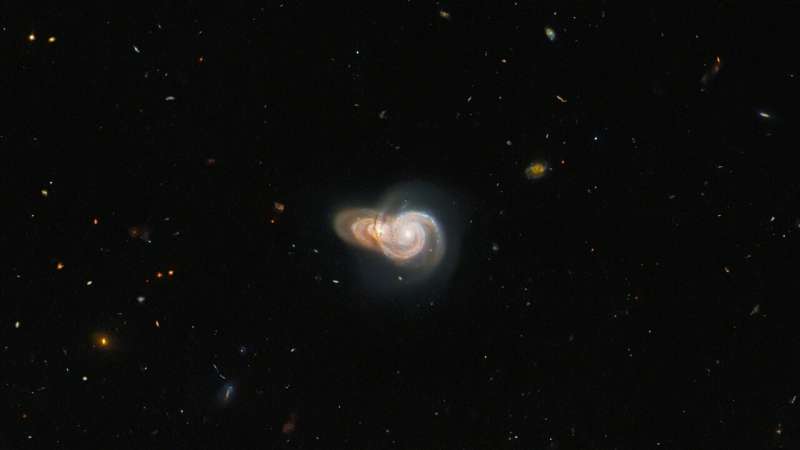Hubble sees two overlapping galaxies

The NASA/ESA Hubble Space Telescope imaged these two overlapping spiral galaxies named SDSS J115331 and LEDA 2073461, which lie more than a billion light-years from Earth. Despite appearing to collide in this image, the alignment of the two galaxies is likely just by chance—the two are not actually interacting. While these two galaxies might simply be ships that pass in the night, Hubble has captured a dazzling array of other, truly interacting galaxies.
This image is one of many Hubble observations delving into highlights of the Galaxy Zoo project. Originally established in 2007, Galaxy Zoo and its successors are massive citizen science projects that crowdsource galaxy classifications from a pool of hundreds of thousands of volunteers. These volunteers classify galaxies imaged by robotic telescopes and are often the first to ever set eyes on an astronomical object.
Over the course of the original Galaxy Zoo project, volunteers discovered a menagerie of weird and wonderful galaxies such as unusual three-armed spiral galaxies and colliding ring galaxies. The astronomers coordinating the project applied for Hubble time to observe the most unusual inhabitants of the Galaxy Zoo—but true to the project's crowdsourced roots, the list of targets was chosen by a public vote.
Provided by NASA's Goddard Space Flight Center





















